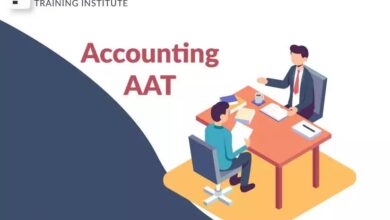Can Leveraging Cloud Computing Help in Education?

Education has changed a lot over the years, taking the leap from textbook and classroom-based learning, to computer-based and online learning. Modern education can be advanced even more with the use of Cloud Computing. To get an idea of how this can work, we discussed the matter with TechQuarters, a London-based IT company that has been working with the cloud, and with educators, for more than a decade. In that time, they have helped a lot of companies migrate to the cloud, and leverage the technology to transform their services.
Cloud Computing for Education
The utilization of the Cloud in Education is still fairly recent – as is common with sectors with a long history, change can sometimes be slower to enact. However, as an IT support company London based educators have turned to for years now, TechQuarters were well placed to describe how cloud computing can be used by educational institutions of all kind.
-
Virtual Classrooms
The first major thing to consider is the fact that cloud computing enables educators teach outside of traditional classrooms. The boom in use of virtual classrooms over the last 2 years (due to the Covid-19 pandemic) has proven that it can be a highly effective method.
Using Cloud-based software to support remote communication, and the distribution of learning resources is all one needs to set up a virtual classroom. TechQuarters recommends Microsoft Teams as a solution – as it enables one to hold virtual meetings with up to 1,000 participants, hold rich presentations with multimedia resources, etc.
-
Accessibility
The other great thing about educators leveraging the cloud is that they can increase the accessibility of their services. With the use of virtual classrooms, distance and geographical location is no longer an obstacle to accessing education.
Furthermore, utilizing the cloud means educators can make their learning content accessible remotely – for example, via a video portal, or a cloud drive where students can view or download digital textbooks.
-
Cost-Savings
Cost-savings can be made in a number of areas, when educators leverage the cloud. Students can find cost-savings when their educational materials are digitized and made available from the cloud.
Additionally, by simplifying the process of enrolment of students, delivery of learning materials, and the tracking of assignments, all through cloud-based apps and platforms, education providers can reduce management costs.
-
Secured & Centralised Data
Having provided IT support services London based companies have been relying on for years, TechQuarters were very confident in saying that secure data storage is one of the biggest benefits of cloud computing that any business – including educational institutions – can get.
Centralising one’s data in the cloud has a number of benefits. Firstly, it ensures that all data remains up-to-date and in sync across all endpoints – which means the management of educational resources becomes much easier.
Furthermore, storing data in the cloud means that you are benefitting from the cutting edge security that cloud providers invest in.
-
Scalable Infrastructure
Scalability is a word that gets thrown around a lot, and seems like a complicated principle. But, in reality, all it means is how easily an app or service can match the amount of people using it.
So, when the number of active users who are accessing an application increases, the application in question needs to be scaled up. Equally, if the number of active users on an application decreases, the application can be scaled down.
This principle of scalability can be applied to the apps and platforms an educational institute uses, or the learning materials they are deploying to students. Having a scalable infrastructure can help an institute quickly adapt to a large influx of users.
-
Agile Education
According to TechQuarters the IT support for education that they provide is designed to help institutes run as efficiently as possible. The cloud can help educators do this; and the benefit of this is that they can provide more agile services.
The ability to scale their apps and service in response to increased use; or the ability to deliver remote lessons and alternative learning resources (such as video tutorials, etc.) are examples of agile educational services that reflect modern cloud technology.
VISIT FOR MORE ARTICLE : todaystory.org




